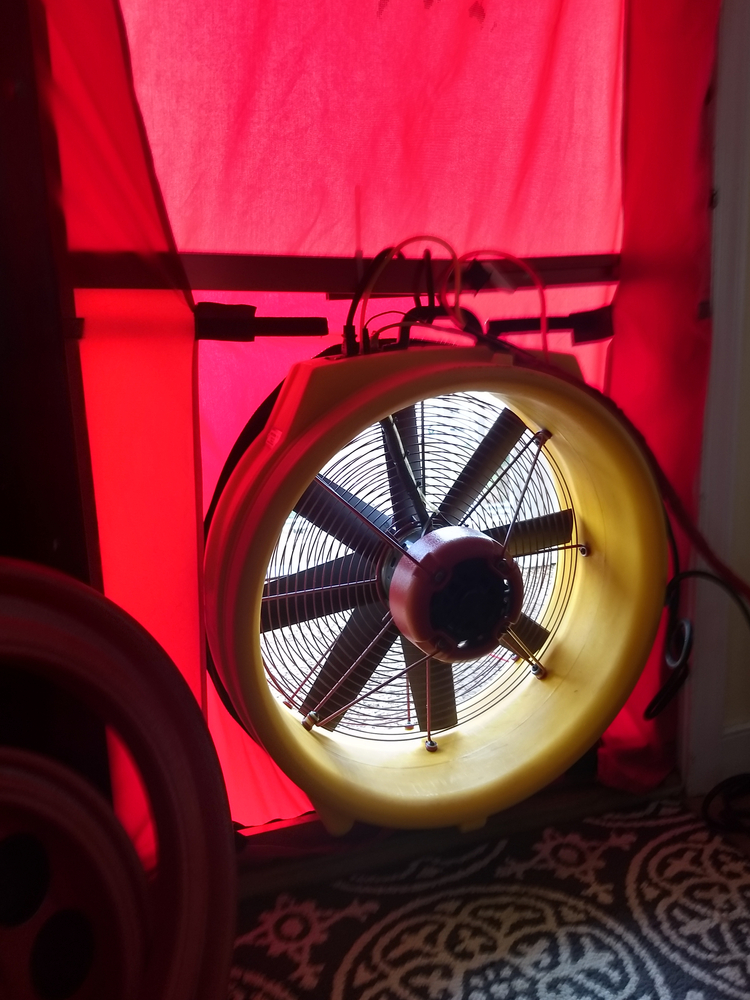Inflation Reduction Act Tax Credits for Insulation
Discovering the Airflow in Your Home: Unveiling the Secrets of Blower Door Testing
In the realm of home energy professionals, a vital diagnostic tool known as the blower door takes center stage, unraveling the mysteries of air movement within your dwelling.
Professional energy assessors employ the blower door test as a pivotal component in assessing a home’s air tightness. In our exclusive instructional video, we delve into the intricacies of this test, showcasing how it is conducted and how your contractor interprets the invaluable diagnostic information obtained. By scrutinizing the test results, potential areas of air leakage can be identified and energy-saving enhancements can be implemented.

There are several compelling reasons forestablishing optimal building tightness:
- Minimizing excessive energy consumption resulting from air leakage
- Sidestepping potential issues of moisture condensation
- Eliminating uncomfortable drafts caused by infiltrating cold or warm air
- Exerting control over outdoor contaminants, pests, and odors from permeating your living space
- Determining the proper sizing and airflow requirements for heating and cooling systems
- Assessing the necessity of mechanical ventilation to maintain indoor air quality and ensure an adequate supply of fresh air.
Understanding Blower Doors: Their Purpose and Mechanism
At the heart of blower door testing lies a powerful fan, adroitly positioned within one of your home’s exterior doorframes by a trained energy professional. Following meticulous calibration, the fan initiates a process of extracting air from your dwelling, subsequently reducing the internal air pressure. As a result, higher external air pressure rushes in through unsealed crevices, cracks, and apertures, such as gaps, cracks, or wiring penetrations. In situations where lowering the pressure inside the home is impractical, the fan may be operated in reverse, increasing the air pressure within the premises.
During the blower door test, analysts may employ an infrared camera to scrutinize the walls, ceilings, and floors, effectively pinpointing areas lacking insulation and detecting air leaks. Additionally, a non-toxic smoke pencil might be utilized to identify any air leakage points in your home. These tests serve to quantify the air infiltration rate, with the data being recorded on a laptop or tablet device.
The blower door test is conducted as an integral part of the comprehensive energy assessment of your home. In certain cases, your contractor may even employ the blower door during the air sealing process, a technique known as blower door-assisted air sealing. Subsequently, the blower door is reactivated to measure and verify the level of air leakage reduction achieved.
Blower doors encompass a sturdy frame and a flexible panel that securely fit into a doorway. Equipped with a variable-speed fan, a digital pressure gauge measuring pressure differentials inside and outside the home, and a device known as a manometer to gauge airflow, blower doors come in two types: calibrated and uncalibrated. To ensure accurate results, auditors must employ calibrated blower doors, which possess multiple gauges that precisely measure the airflow exiting the house through the fan. In contrast, uncalibrated blower doors solely identify leaks without providing an overall assessment of the home’s tightness.
The calibrated blower door’s data empower your contractor to quantify the extent of air leakage both before and after implementing air sealing improvements, effectively showcasing the reduction achieved.
Preparation for the Blower Door Test
To ensure a smooth and effective blower door test, proper preparation is key. Collaborating with your home energy professional, you can take a few steps to ready your home for the assessment. Start by conducting a walkthrough with the auditor, pointing out areas that are drafty or difficult to condition comfortably. Grant access to all areas of your home, including closets, built-in cabinets, attics, crawl spaces, and any unused rooms. Prior to the test, ensure that all exterior doors and windows are closed, while interior doors are opened. Close fireplace dampers, doors, and woodstove air inlets. If you have a wood-burning stove, make sure all fires are extinguished and remove any ashes from open fireplaces. Additionally, the auditor may request control settings on atmospheric fossil fuel appliances, such as the furnace, water heater, fireplaces, and stoves, to prevent them from firing during the test. By adequately preparing your home, you can facilitate an efficient and accurate blower door test, paving the way for valuable insights into your home’s air leakage and energy performance.
In conclusion, the utilization of blower door testing by home energy professionals unveils invaluable insights into the airflow dynamics within your living space. By accurately assessing your home’s airtightness, identifying air leakage points, and implementing energy-saving measures, you can achieve enhanced energy efficiency, comfort, and indoor air quality. Through the collaborative efforts of trained energy assessors and contractors, blower door testing emerges as a crucial tool in the pursuit of sustainable and optimized homes. Embrace the power of blower door testing and embark on a journey toward a more energy-conscious and eco-friendly living environment.

Call Today For A Free Quote
"Trusted And Referred For A Reason"
Our Expert Team ...
Can Help You Decide What Type Of Insulation Is Right For You
Just give us a call or send a submission form. All estimates are free. Our certified technicians are always ready to help answer any questions.

Robert LaPlace
Owner / Operator
